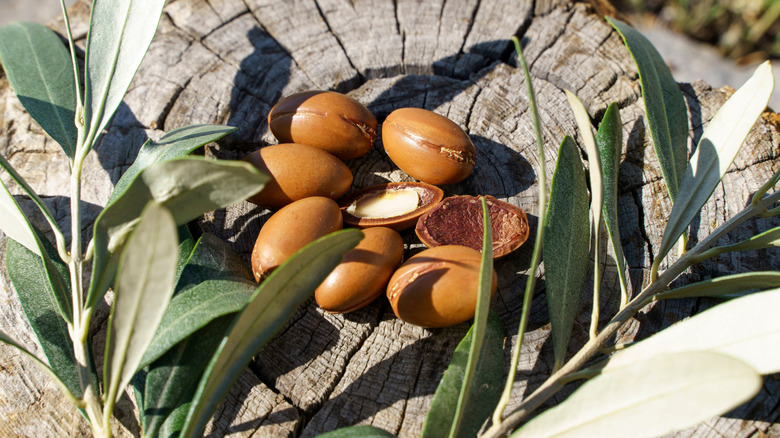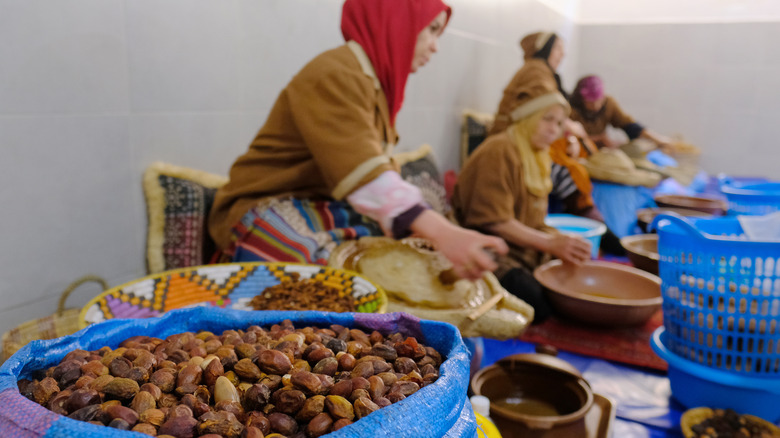The Fascinating Reason Behind Argan Oil's High Price Tag
We may receive a commission on purchases made from links.
Though consumers in the States would be forgiven for thinking it's a strictly cosmetic oil found in luxury lotions, argan oil is also an essential ingredient in Moroccan cooking. From tagines to salads to couscous, culinary argan oil has a taste similar to hazelnut or walnut, with a unique, nutty aroma. But argan oil can cost as much as $300 per liter, a price tag that has earned it the title of most expensive edible oil in the world. One of the reasons for argan's sky-high price is that it primarily grows in Morocco's semi-arid regions. Large-scale cultivation is difficult because the trees are slow-growing and only thrive in very specific conditions.
Another factor in the price is the labor involved. Argan fruit is largely collected by hand and only after it has fallen from the tree to ensure its ripeness. Once collected, the workers lay the fruit out to dry in the sun before peeling off its outer layers. The next step is the most sensitive: The leftover nut must be carefully hand-cracked to get to the oily kernel without grinding it. Not just anyone or any machine can do this task. From there, it's ground up — traditionally by hand, though there are now machines that can do the laborious task. It's estimated that for one person to produce one liter of argan oil takes approximately 24 hours. Hence, the high price tag.
How argan oil went global
Though it seems the Western world was largely ignorant of the prized nut until recently, the Amazigh people of North Africa have been harvesting it for years using traditional methods that still continue to this day. There's arguably one woman to thank for setting off the argan oil boom: Dr. Zoubida Charrouf, who studied the argan tree for her doctoral dissertation and started Morocco's first-ever argan oil processing cooperative. Today, these cooperatives have empowered women by giving them an income and livelihood, while also protecting the indigenous species known locally as "the tree of life." The argan tree is now a UNESCO-protected species that continues to be an economic boon for local communities while also playing an irreplaceable part in the region's ecosystem.
If you've got money to burn, consider trying the culinary version of argan oil. This type of oil is made by lightly roasting the kernels, which gives it a lovely golden glow. It can be used the same as other nut oils (bouncing between savory and sweet profiles) and as both a condiment and an ingredient. Since it's best experienced as a finishing oil, many Moroccans enjoy it simply as a drizzle on top of eggs or a dip for their fluffy khobz bread. It has a much higher price tag than olive oil, so you'll want to be particular about reading the label and making sure it's clearly stated "100% pure argan oil," along with having a Moroccan origin and a designation of culinary-grade, not cosmetic.

